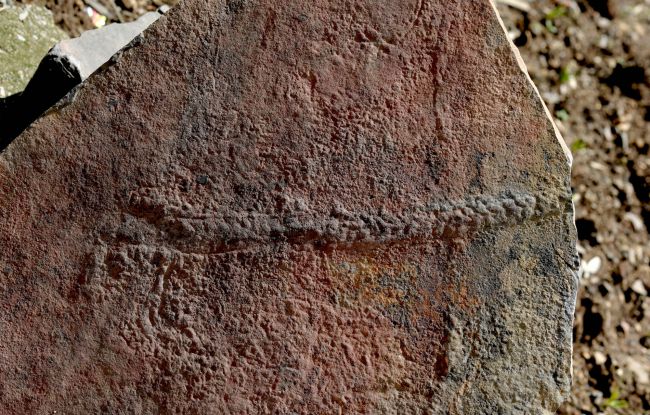All fossils capture a moment in time. And in the case of living things, that moment is the moment that they died. It's the truth, from mighty T. rex to tiny insects.
But in the case of fossils like ancient footprints, well, the moment that was captured is different. That moment is of an animal in motion — like an iguanodon family running along a plain under the open sun in search of food. It's a reminder that these creatures had their own busy ecosystems, full of creatures coming and going. They were alive!
But what if you had a fossil that showed both moments at once? That is why scientists are so excited about the fossil at the top of this post. It is of a trail — one long footprint — left behind by a 550-million-year-old worm called Yilingia spiciformis. And then at the end of its trail?
There's the ancient worm itself.
The end of the line
This specimen, which was found in southern China, gives paleontologists a unique glimpse into the past. Two moments in time, both caught in one fossil. It's incredible! And incredibly rare, too.
As best as scientists can tell, this is the first fossil discovered of this particular ancient worm. It was around 10 centimetres (4 inches) long and had an appearance that was similar to a spiky millipede. This means that the creature may have been caught somewhere between being an ancestor of arthropods (such as crustaceans) and annelids (segmented worms).
But regardless, its life — and death — have been caught here forever in this rock. The chances of such a moment being preserved is remarkable. And it just goes to show that even the simplest and smallest animals can find ways to make an impression.
Watch the video below for an animation of the creature's final march.
 This unique fossil contains both an animal's trail and the animal itself. (Virginia tech College of Science)
This unique fossil contains both an animal's trail and the animal itself. (Virginia tech College of Science)









